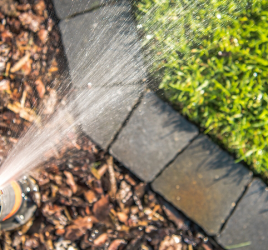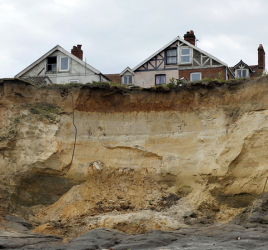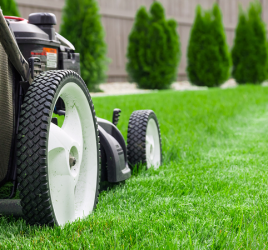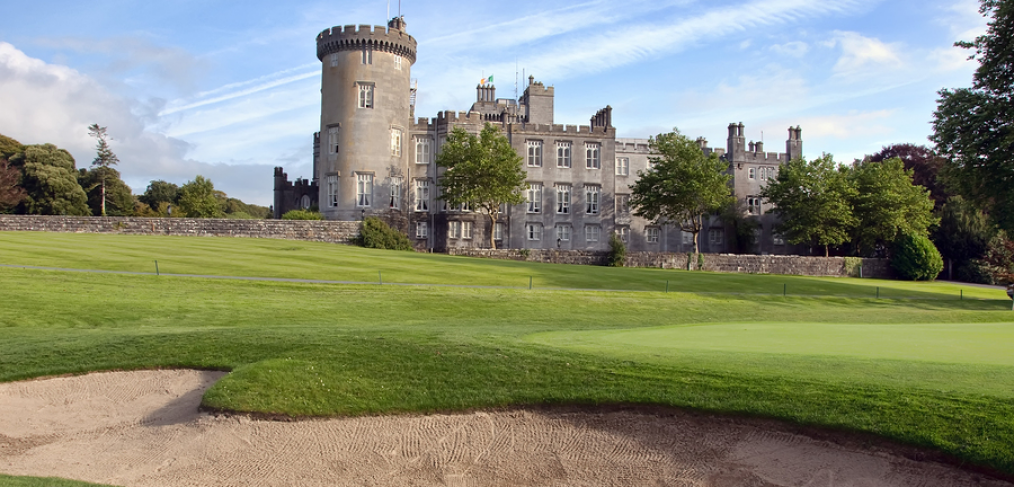
Turfgrass: History and the Environmentally Responsible Lawn
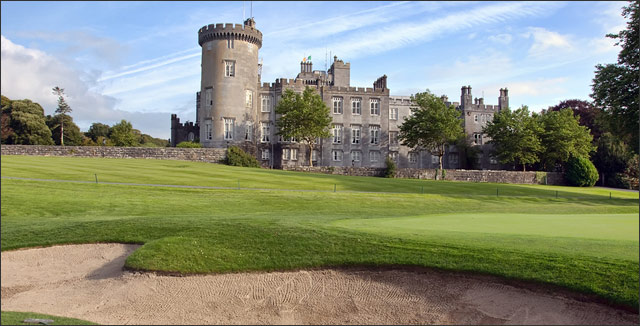
With all the talk about prairie grasses and planting to attract pollinators to your yard, you might be wondering if turfgrass, or lawn is ecologically responsible to have at all in your yard.
You also might be wondering how, if not, every suburban lawn, every green public space in the city, and every berm is covered with the stuff and why we just think of it as normal. It has an interesting history, actually.
The kind of lawn we take for granted in most places – the lush green expanse of ground “paved” with grass – is actually a hundreds of years old sign of wealth and prosperity. At least, it was until the invention of lawn mowers and turf harvesters made it possible for the everyday Joe to maintain a lawn.
The History of Turfgrass
Let me back up – turfgrass isn’t exactly new. Dr. James B Beard in his book Field of Dreams, The Evolution of Turfgrass Sod writes that humans have known of, and invested time and energy to make their lives more comfortable with turfgrass.
Of course, the African savannahs are naturally covered with short turfgrasses and few trees, leaving wide open spaces good for spotting prey and hunting.
In medieval Europe, if you had a castle to protect, you planted turfgrass on the grounds all around so you could spot any enemy approaching from miles away. There is published literature from as early as the 12th century showing that lawns were planted even in public squares and maintained by either grazing animals or handheld scythes.
As this practice became more normal for the large parks surrounding wealthy estates, the grasses nearest the house were always maintained by hand by servants. Therefore, only the wealthy could afford large parks of turfgrass and this was one of the ways to show it.
Lawns and Games
The lawns we think of as normal came to us first from England and Scotland. In addition to showing one’s wealth, lawns were needed for several games which also came to us from those countries.
Some types of lawns were known as “bowling greens” and used for the forerunners of tennis, croquet, cricket and golf putting. Scotland, in particular, is a country covered in more turfgrass than trees. It is also the birthplace of golf, which caught on in North America toward the end of the 19th century.
By the 19th century, along with the immigrants and seed needed to begin planting lawns, the first mechanical lawn mower was invented by Edwin Beard Budding (1830). By 1890, the mass production of mechanical mowers made it easy and affordable for the average lawn owner to keep it maintained.
The Role of the Father of Modern Landscape Architecture
Enter Frederick Law Olmstead, the father of modern landscape architecture. In many places, as he copied the large “parks” of big English estates in our public park system and elsewhere, he also brought big lawns into vogue all over North America.
But the real change began in 1952 in Levittown, Long Island with a “cookie cutter” suburban community. This was when young GI’s with families were searching for a place to live. The hugely popular Levittown, and others to follow, offered affordable housing.
Along with the package came a perfect green lawn with instructions on how to maintain it. This gave rise to a growing golf enthusiasm and the practice of sodding – instead of growing a lawn from seed.
It also gave rise to the widespread use of pesticides, fertilizers, and weed-control products that, while effective, eliminated plants like clover – which was an accepted (and beneficial) element of lawns before 1950. And these products contributed to groundwater, river and lake pollution and algae blooms.
What is an Environmentally Responsible Lawn?
First, let me say that any lawn, even considering the CO2 emission inherent in the use of a lawnmower to maintain it, is good for the environment. All plant matter is more beneficial to the earth than no plant matter.
Lawn grass is no exception. So, if all you have is a lawn and you mow it regularly, you’re still doing something good for the environment.
That’s a good thing, right?
Apart from this, the best thing you can do is make sure you have the type of turfgrass that will grow most appropriately – neither too fast nor too slowly – for the climate it’s in. You want one that won’t require more water than is good for your environment.
Basically, choose a grass that is suited to your zone. Here’s a great guide to finding the right grass for where you live.
The second thing is to maintain it well. This means mowing regularly. You might not know this, but waiting too long to mow your grass will eventually kill it. It seems so counter-intuitive, right?
Here’s What Happens
Your grass, like all plants, has a crown. This is the part of the plant that puts out new leaves and stems. Grass also has a thatch layer, which is what causes it to be spongy underneath. The thatch layer is good, until it gets too thick and then it can become home to many pests.
So, you need some of it but not too much. When a lawn gets mowed too infrequently, it raises the level of the crowns – the grass just comes to “expect” to grow a little higher. But then the zealous homeowner mows too close to the ground, cutting most or all of the crowns of the plant.
Grass without crowns is very weak and can’t survive pests or environmental factors without a lot of help from fertilizers and a high level of maintenance.
Hence, if you’re cutting your grass too short or too infrequently, you’re keeping the plants from being able to put down deep enough roots (plant growth requires that it gets enough sun energy from its leaves) and it will eventually kill it.
To make a lawn environmentally friendly, you want one you can maintain as naturally as possible without having to water it or apply fertilizer all the time.
Take Away
As lawn season approaches, take the time to educate yourself a bit on how best to treat your lawn and then treat it well, knowing you’re doing a great thing for the environment at the same time!

